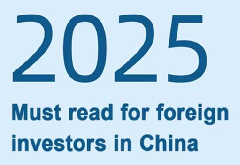Provisions for the Lot Release of Biological Products
Chapter IV Review, Test, Inspection and Release
Article 19 For the lot release of vaccines, dossier review and sample testing shall be conducted lot by lot. For other biological products, lot release may be conducted by means of independent dossier review or by combining dossier review with sample testing, and on-site verification may be conducted as required. For the testing items and testing proportion for different varieties, the NIFDC shall organize the demonstration and submit a copy to the NMPA. Each lot release institution shall conduct test in accordance with the determined specifications.
In the process of the lot release of specific variety, the lot release institution may make a comprehensive evaluation according to the process and quality control maturity of the variety and previous lot release and dynamically adjust the testing items and testing frequency of the variety. Where there is any nonconforming item of the products subject to lot release, the lot release institution shall increase the testing frequency on the corresponding item of the products in subsequent batches.
Article 20 Dossier review including:
(I) Whether the content of the application dossiers meet the requirements;
(II) Whether the raw materials and auxiliaries, bacterial strains/seeds, viral strains/seeds and cells used for production are consistent with those approved by the NMPA;
(III) Whether the production process and process control are consistent with those approved by the NMPA and meet the requirements in the national drug standards;
(IV) Whether the testing items, testing methods and results of bulk, final bulk and finished products meet the requirements stipulated by national drug standards and drug registration standards;
(V) Whether there is any abnormality in the analysis on the trend of key quality indicators of the product;
(VI) Whether the product package, label and package inserts are consistent with those approved by the NMPA;
(VII) Risk assessment report on production process deviation and other risks with impact on product quality;
(VIII) Other items to be reviewed.
Article 21 Under any of the following circumstances, the product shall be subject to whole-item test in accordance with the registration standards and may be subject to the test on partial items until at least three consecutive batches of products manufactured pass the lot release:
(I) The product of the lot release applicant has been newly approved for marketing by the NMPA;
(II) Changes of production site are approved;
(III) Major changes of production process are approved;
(IV) The products have not been applied for lot release for two consecutive years;
(V) The production is approved to resume after ordered production suspension for violation of relevant laws and regulations;
(VI) There is information suggesting that the quality of the corresponding product or quality control has potential risks.
Article 22 The lot release institution shall complete lot release within the work time limit stipulated herein. The time for the lot release applicant to supplement and correct the materials and the time for on-site verification, on-site inspection and technical evaluation shall not be included in the time limit for lot release.
Lot release shall be completed within 60 days for vaccine products and within 35 days for blood products and the in vitro diagnostic reagents for blood screening. Where a re-test is required, the time limit for lot release may be extended by two test cycles of the item, and the lot release applicant shall be informed.
If the time limit for lot release indeed needs to be extended due to product characteristics or testing item, the NIFDC shall determine and publicize the time limit after review.
Article 23 If the lot release institution is unable to complete lot release within the stipulated time limit due to force majeure, handling of public health emergencies or other reasons, it shall inform the lot release applicant in writing of the extended time limit for lot release, the reasons and expected time of recovery. If the lot release institution indeed can hardly complete lot release, the NIFDC may coordinate with other lot release institutions for undertaking the work.
Article 24 The lot release institution, under the premise of guaranteeing independence of dossier review, sample testing and other technical review work, may communicate with the lot release applicant about specific issues requiring explanation in the lot release process. Verification can be carried out through telephone communication, written notice and other forms, and on-site verification can be carried out if necessary. If it is necessary for the lot release applicant to provide explanations or supplement materials, a written notice shall be given and the time limit for reply shall be specified.
Where the authenticity of the application dossiers for lot release and the samples needs further verification, the lot release institution shall promptly send personnel to the manufacturer for on-site verification, and may take such measures as retrieve the original records and check the equipment and logs on the spot and conduct on-site sampling and testing according to the situation. On-site verification shall be carried out in accordance with the relevant requirements for on-site verification for lot release of biological products, and the drug regulatory departments of provinces, autonomous regions or municipalities directly under the Central Government shall be notified to send law enforcement personnel to provide assistance.
Article 25 For any of the following circumstances, the lot release institution shall notify local drug regulatory departments of provinces, autonomous regions or municipalities directly under the Central Government in the place where the lot release applicant or manufacturing site is located, propose the recommendations for on-site inspection and copy to the NMPA:
(I) Sterility test is nonconforming;
(II) Efficacy and other efficacy indicators are nonconforming in the test of two consecutive batches;
(III) Dossier review prompts that serious issues may exist in production and quality control, or that in process deviation, quality deviation, failures and accidents during the production need to be further verified;
(IV) There may be authenticity issues of the application dossiers for lot release or the samples;
(V) Other circumstances prompting major quality risks of the product.
During the investigation and handling of the above issues, the acceptance of lot release application or issuance of lot release for corresponding variety of the applicant may be suspended.
If any of the above situations during the lot release of imported biological products is identified, the lot release institution shall report to the NMPA and put forward relevant suggestions such as on-site inspection.
Article 26 The drug regulatory departments of provinces, autonomous regions or municipalities directly under the Central Government shall conduct the on-site inspection within 10 days upon the receipt of the notification from the lot release institution and the suggestions on on-site inspection.
The drug regulatory departments of provinces, autonomous regions or municipalities directly under the Central Government shall, within 10 days upon completion of the inspection, organize the technical assessment on the quality risks of relevant batches of products proposed by the lot release institution, and make a clear conclusion. The time limit may be appropriately extended under special circumstances with reasons given. The NMPA shall, upon the receipt of the notification of imported products and the suggestions on on-site inspection from lot release institutions, organize the CFDI to carry out overseas on-site inspection in a timely manner based on risk assessment. The time limit for overseas on-site inspection shall be determined on specific conditions.
Inspection agencies shall make recommendations on risk control where emergency measures may be required according to the degree of risks and scope involved that are identified in the inspection. The drug regulatory departments receiving the notification shall notify the lot release institution to disapprove or suspend the lot release for relevant products or all products of the lot release applicant and order the lot release applicant to make rectification.
The lot release applicant shall report to the drug regulatory departments and the lot release institution after finding out the cause for the issue and completing the rectification. The lot release shall not be resumed until the drug regulatory departments have confirmed its compliance with the requirements and notified the lot release institution.
Article 27 If any major quality risk in biological products is identified during supervision and inspection, the drug regulatory departments shall notify the lot release institution in time to disapprove or suspend the issuance of lot release for relevant products of drug MAHs based on the inspection results.
Article 28 If the lot release applicant applies for withdrawal of its lot release application, it shall provide the explanation, and may withdraw the application only upon approval by the lot release institution; the lot release applicant shall report such withdrawal to the drug regulatory departments of provinces, autonomous regions or municipalities directly under the Central Government. If the lot release institution has confirmed through review that the dossiers show defects or the testing results do not comply with the requirements, the application shall not be withdrawn by the lot release applicant.
Where an application for withdrawal of the lot release is required for such situations as that the test results fail to meet the provisions during the simultaneous lot release process, reasons shall be explained and the application may be withdrawn upon the approval of the lot release institution.
Article 29 The lot release institution shall make decision on lot release based on dossier review, sample testing or on-site inspection. If the requirements are met, the institution shall issue a Certificate for Lot Release of Biological Products which is affixed with the special seal for lot release, and send it to the lot release applicant.
The electronic and printed certificates for lot release issued by the lot release institution have the same legal effect.
For the sales of biological products subject to lot release administration, a copy or electronic document of the Certificate for Lot Release of Biological Products for this batch stamped with the seal of the enterprise shall be presented.
Article 30 For those in any of the following circumstances, the lot release shall be disapproved, and a Notice of Disapproval of Lot Release of Biological Products shall be issued to the lot release applicant and copied to the drug regulatory departments of provinces, autonomous regions or municipalities directly under the Central Government in the place where the lot release applicant or the import port is located:
(I) Any dossier does not meet the requirements as found in the review;
(II) Any nonconforming sample is found in the test;
(III) Authenticity issues are identified in on-site verification;
(IV) Violation of the Good Manufacturing Practice for Drugs and serious defects are found in on-site inspection;
(V) Systematic and major risks in product quality are identified in on-site inspection;
(VI) The lot release applicant fails to supplement and correct the dossiers within the prescribed timeline without rational reason;
(VII) Where there is a major quality risk upon the comprehensive assessment;
(VIII) Other circumstances in noncompliance with the laws and regulations.
Article 31 Biological products of which lot release is disapproved or withdrawn shall be destroyed by the lot release applicant in accordance with relevant regulations under the supervision of the local drug regulatory departments of provinces, autonomous regions or municipalities directly under the Central Government. The imported biological product of which lot release is disapproved or withdrawn shall be destroyed under the supervision of the drug regulatory departments in the place where the import port is located or be disposed according to law.
Article 32 If the product is identified to have any quality or other potential safety issues, involving the batches already marketed or circulated, the lot release institution shall immediately report to the drug regulatory departments of provinces, autonomous regions or municipalities directly under the Central Government where the lot release applicant is located and where the production site is located; if the imported biological product is involved, the lot release institution shall notify the drug regulatory departments of provinces, autonomous regions or municipalities directly under the Central Government where the import port is located. The drug regulatory departments receiving the notification shall immediately notify the lot release applicant.
The lot release applicant shall immediately take measures such as stopping the sale and use and recalling the defective products, and destroy them under the supervision of the drug regulatory departments in accordance with relevant provisions. The lot release applicant shall report the destruction records to the drug regulatory departments and the corresponding lot release institution simultaneously.
The drug regulatory departments may take such measures as accountability warning meeting and rectification within a time limit based on the risk assessment.
For the recall of product, a lot release applicant shall not be exempted from other legal liabilities to be borne according to law.
Article 33 Lot release institutions shall summarize their annual lot release work. The NIFDC, after summarization and analysis, shall report to the NMPA before the end of March each year.



